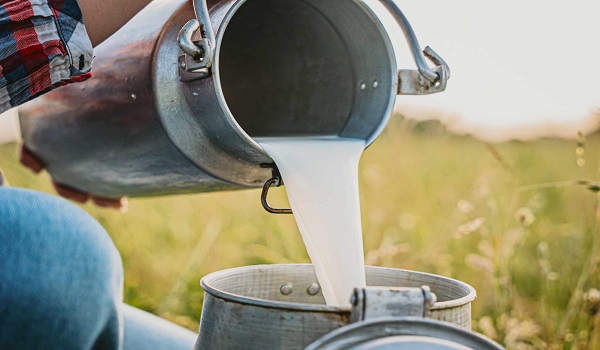Raw milk consumption in the United States has surged by 25% over the past year, as reported by market research agency NielsenIQ. This trend has continued unabated even after the first case of avian influenza in cattle was confirmed at the end of March 2024. From the end of March to mid-May, weekly raw milk sales increased by between 21% and 65% compared to the same period last year.
Health Risks and Federal Warnings: Despite the growing popularity of raw milk, federal agencies like the Food and Drug Administration (FDA) and the Centers for Disease Control and Prevention (CDC) strongly advise against its consumption. These agencies have long highlighted the risks of foodborne illnesses associated with raw milk due to its potential to harbour harmful pathogens. The ongoing H5N1 avian influenza outbreak has heightened these concerns. Infected dairy cows are known to shed large amounts of the virus in their milk, but while pasteurization has been shown to inactivate the virus, there is no definitive evidence linking raw milk consumption to human transmission of H5N1. The only three human cases of this strain have been among dairy farm workers who had close contact with infected animals.
Lack of Conclusive Evidence: Experts have not yet determined whether consuming raw milk increases the risk of H5N1 transmission to humans. Although veterinarians have found that infected cows shed the virus in their milk and that pasteurization can inactivate it, no ‘live’ virus has been detected in commercial milk. Additionally, domestic cats on infected farms have died after consuming raw milk, suggesting a potential risk, but the impact on human transmission remains unclear. Agriculture Secretary Tom Vilsack emphasized that even a small amount of infected milk could pose a risk of transmission, but the Raw Milk Institute disputes these warnings as fearmongering, citing the lack of concrete evidence.
Raw Milk Producers’ Perspective: Raw milk producers argue that their product can be safely produced and monitored. In states where raw milk sales are legal, such as California, Maine, New Hampshire, New Mexico, and Pennsylvania, producers maintain rigorous testing protocols. For example, Raw Farm LLC in California is enrolled in a monitored herd pilot program and regularly tests its milk for pathogens. The Raw Milk Institute claims that raw milk can be a low-risk food if properly managed, and they criticize the FDA for what they see as exaggerated warnings.
FDA’s Awareness Campaign: In response to the increasing consumption of raw milk, the FDA has launched an awareness campaign during National Dairy Month. The campaign aims to educate consumers about the risks of raw milk and debunk common myths. The FDA stresses that pasteurization does not reduce milk’s nutritional value or cause lactose intolerance. The agency is also conducting research to validate the effectiveness of pasteurization in inactivating the H5N1 virus. The research includes:
- Pre-pasteurization Milk Sampling: Testing raw milk samples to determine virus levels before pasteurization.
- Thermal Inactivation Studies: Estimating the time and temperature required to inactivate the virus.
- Continuous Flow Pasteurization Studies: Confirming the parameters needed to inactivate the virus during commercial pasteurization.
- Raw Milk Cheese Ageing: Assessing if the virus can survive during the ageing process of raw milk cheese.
The FDA is also conducting a second nationwide sampling survey of dairy products available in retail. The first survey did not detect viable virus in 297 samples, and the second will test 155 products, including aged raw milk cheese, pasteurized milk, and various dairy products.
Factors Driving Raw Milk Sales: Several factors may explain the rise in raw milk consumption:
- Perceived Health Benefits: Some consumers believe raw milk is more nutritious and beneficial than pasteurized milk.
- Distrust in Federal Warnings: The lack of conclusive evidence against raw milk may lead consumers to question federal advice.
- Availability: In states where raw milk sales are legal, it is easily accessible.
- Producer Advocacy: Raw milk producers actively promote the safety and benefits of their products, influencing consumer choices.
The FDA’s campaign seeks to raise awareness about the risks associated with raw milk, particularly in the context of the ongoing H5N1 outbreak. Changing consumer behaviour will require clear communication, accessible evidence, and continued monitoring of milk safety to ensure public health.


